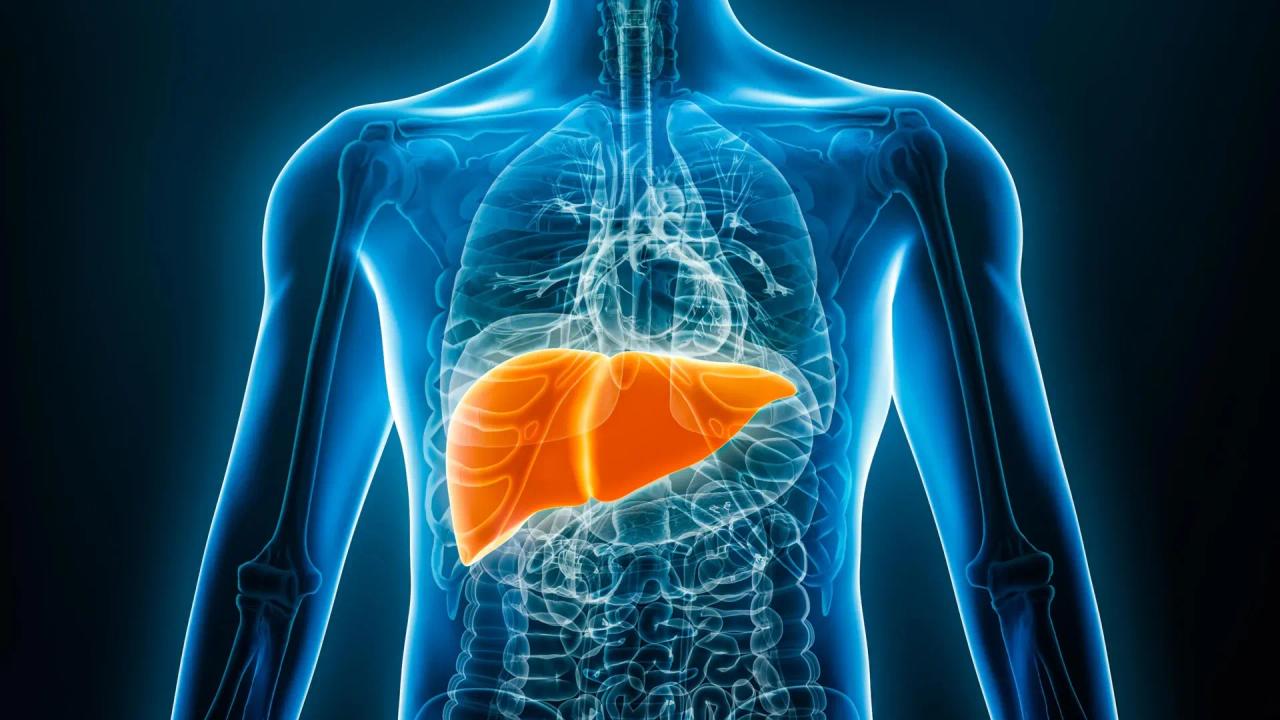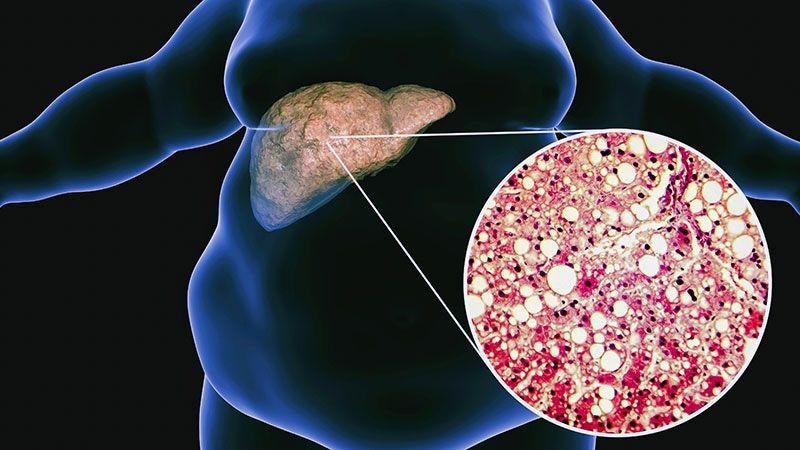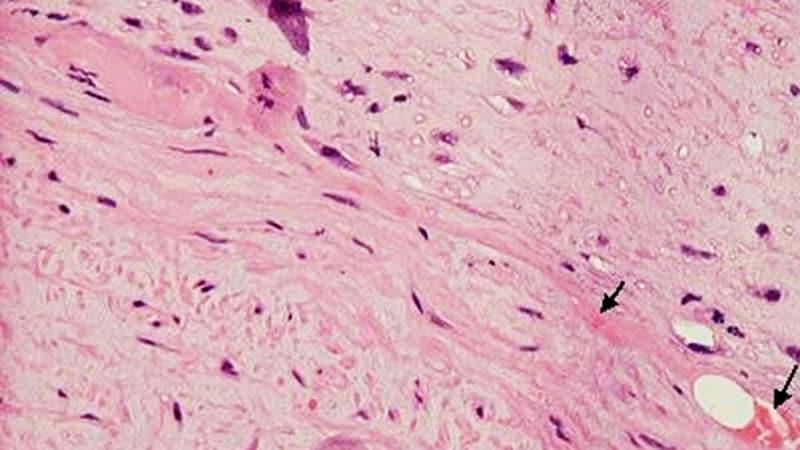AI Algorithm Detects Undiagnosed Early-Stage Liver Disease, Promising Improved Patient Care
4 Sources
4 Sources
[1]
AI Tool Identifies Undiagnosed Early-Stage MASLD
SAN DIEGO -- An artificial intelligence (AI)-driven algorithm may be able to accurately detect early-stage metabolic dysfunction-associated steatotic liver disease (MASLD) based on imaging findings and other criteria in patient electronic medical records, according to new research. Among the patients identified by the algorithm as meeting the criteria for MASLD, only a small percentage had an MASLD-associated diagnostic code. "A significant portion of patients who meet criteria for MASLD go undiagnosed, which can lead to delays in care and progression to advanced liver disease," said lead author Ariana Stuart, MD, an internal medicine resident at the University of Washington, Seattle, who presented the findings (abstract 2360) at The Liver Meeting 2024: American Association for the Study of Liver Diseases (AASLD). "However, people shouldn't interpret our findings as a lack of primary care training or management," she said. "Instead, this study indicates that AI can complement physician workflow and address the limitations of traditional clinical practice." Typically, the identification of MASLD has relied on clinician recognition and descriptions in chart notes, Stuart said. Early-stage disease often goes unnoticed, particularly if patients remain asymptomatic, until cirrhosis develops. To address this, Stuart and colleagues created a machine learning, natural language processing AI algorithm on the basis of MASLD criteria from AASLD: Hepatic steatosis on imaging and at least one metabolic factor (elevated body mass index, hypertension, prediabetes or diabetes, or dyslipidemia). The model was validated by two physicians, who manually reviewed monthly cohorts generated by the algorithm. Between December 2023 and May 2024, the researchers used the algorithm to analyze an MASLD cohort from medical centers in the Seattle area. The mean age was 51 years, 44% were women, and 68% were White. Those with alcohol-associated liver disease, metastatic malignancy, and autoimmune, genetic, and infectious causes of liver disease were excluded. The algorithm identified 957 patients with imaging that matched MASLD criteria. Among those, 137 patients (17%) identified by the algorithm had an MASLD-associated diagnostic code. For these patients, the mean time from initial imaging with steatosis to diagnosis was 33 days, according to patient records. An additional 26 patients received an MASLD diagnosis during the study period, with a mean time to diagnosis of 56.2 days. In terms of patient management, 245 patients (26%) had contact with a gastroenterologist or hepatologist based on documentation of a letter, phone call, or office visit. In addition, 546 patients (57%) were screened for hepatitis C. After adjusting for an over-inclusion error rate of 12.8% and an overdiagnosis rate of 0.02%, the research team found 697 patients (83%) lacked a relevant diagnosis. After multiple iterations, the algorithm achieved an accuracy of about 88%, Stuart said. Stuart and colleagues are now testing the algorithm in larger groups and across longer periods. After that, they intend to implement a quality improvement program to increase awareness for clinicians and primary care providers, as well as train users on how to interpret and move forward with findings of hepatic steatosis in patient records. For instance, future AI models could flag patients for additional testing, improve chart review, and aid in research efforts around cardiometabolic comorbidities associated with MASLD, she said. Looking ahead, AI tools such as these represent what's possible for advancements in research, patient care, and clinical workflows, said Ashley Spann, MD, assistant professor and transplant hepatologist at Vanderbilt University, Nashville, Tennessee, and director of clinical research informatics for Vanderbilt's Gastroenterology Division. "AI, in my view, is actually augmented intelligence," she added. "We need to think about the people and processes involved." Spann, who spoke to Medscape Medical News about the use of AI tools in medicine in general, stressed the need for transparency in AI use, careful validation of input-output data, frameworks for machine learning models in medicine, and standardization across institutions. "What we ultimately need is an infrastructure that supports the simultaneous deployment and evaluation of these models," she said. "We all need to be on the same page and make sure our models work in multiple settings and make adjustments based on algorithmvigilance afterwards." Stuart reported no relevant disclosures. Spann serves on Epic's hepatology steering board, which has focused on how to use AI tools in electronic medical records.
[2]
AI finds undiagnosed liver disease in early stages
Liver disease, which is treatable when discovered early, often goes undetected until late stages, but a new study revealed that an algorithm fueled by artificial intelligence can accurately detect early-stage metabolic-associated steatotic liver disease (MASLD) by using electronic health records. The study was presented at The Liver Meeting, hosted by the American Association for the Study of Liver Diseases. "A significant proportion of patients who meet the criteria for MASLD go undiagnosed," said Ariana Stuart MD, a resident at University of Washington Internal Medicine Residency Program and lead author of the study. "This is concerning because delays in early diagnosis increase the likelihood of progression to advanced liver disease." Researchers used an AI algorithm to analyze imaging findings in electronic health records from three sites within the University of Washington Medical System to identify patients who met the criteria for MASLD, the most common form of liver disease, affecting 4.5 million adults in the United States. While 834 patients met the criteria, only 137 actually had an official MASLD-associated diagnosis in their record. This left 83% of patients undiagnosed even when data in their electronic health record showed they met the criteria for MASLD. "People should not interpret our findings as a lack of primary care training or management," Stuart said. "Instead, our study shows how AI can complement physician workflow to address the limitations of traditional clinical practice." MASLD occurs when fat isn't managed properly in the liver and is often associated with other common diseases such as obesity, type 2 diabetes, and abnormal cholesterol levels. Early diagnosis of MASLD is key because it can quickly progress to more severe forms of liver disease, but many individuals in this early stage are asymptomatic, making diagnosis challenging.
[3]
AI algorithm accurately detects early-stage metabolic-associated steatotic liver disease
American Association for the Study of Liver DiseasesNov 18 2024 Liver disease, which is treatable when discovered early, often goes undetected until late stages, but a new study revealed that an algorithm fueled by artificial intelligence can accurately detect early-stage metabolic-associated steatotic liver disease (MASLD) by using electronic health records. The study was scheduled for presentation today at The Liver Meeting, hosted by the American Association for the Study of Liver Diseases. A significant proportion of patients who meet criteria for MASLD go undiagnosed. This is concerning because delays in early diagnosis increase the likelihood of progression to advanced liver disease." Ariana Stuart MD, resident at University of Washington Internal Medicine Residency Program and lead author of the study Researchers used an AI algorithm to analyze imaging findings in electronic health records from three sites within the University of Washington Medical System to identify patients who met the criteria for MASLD, the most common form of liver disease, affecting 4.5 million adults in the United States. While 834 patients met the criteria, only 137 actually had an official MASLD-associated diagnosis in their record. This left 83% of patients undiagnosed even when data in their electronic health record showed they met the criteria for MASLD. "People should not interpret our findings as a lack of primary care training or management," Stuart said. "Instead, our study shows how AI can complement physician workflow to address the limitations of traditional clinical practice." MASLD occurs when fat isn't managed properly in the liver and is often associated with other common diseases such as obesity, Type-2 diabetes, and abnormal cholesterol levels. Early diagnosis of MASLD is key because it can quickly progress to more severe forms of liver disease, but many individuals in this early stage are asymptomatic, making diagnosis challenging. Ariana Stuart, MD, will present the study, "Artificial Intelligence for Early MASLD Identification in the Electronic Medical Record," abstract 2360, on Saturday, Nov. 16 at 8 a.m. PST. American Association for the Study of Liver Diseases
[4]
AI Helps Spot Liver Disease Early
An AI program trained to spot a leading type of the disease, called metabolic-associated steatotic liver disease (MASLD), unearthed hundreds of undiagnosed cases among the electronic health records of patients within the University of Washington Medical System, researchers report. "A significant proportion of patients who meet criteria for MASLD go undiagnosed," said lead researcher Dr. Ariana Stuart, a resident at the University of Washington in Seattle. "This is concerning because delays in early diagnosis increase the likelihood of progression to advanced liver disease." In the study, the AI program identified 834 patients whose imaging scans indicated they had fatty liver disease, but only 137 had a formal diagnosis in their medical record. That means that 83% of patients with fatty liver disease remained undiagnosed, even though data already in their electronic health record supported such a diagnosis, researchers said. Stuart presented the study Saturday at the annual meeting of the American Association for the Study of Liver Diseases in San Diego. Such research should be considered preliminary until published in a peer-reviewed journal. "People should not interpret our findings as a lack of primary care training or management," Stuart said in a meeting news release. "Instead, our study shows how AI can complement physician workflow to address the limitations of traditional clinical practice." As many as 42% of U.S. adults have some form of fatty liver disease, according to another study, published earlier this month in the journal Nature Communications Medicine. Obesity, drinking and type 2 diabetes are the main drivers behind fatty liver disease, the earlier study reported. If left untreated, fatty liver disease can lead to scarring of the liver and increase a person's risk of liver disease and liver cancer. Early diagnosis of fatty liver disease is key to preventing its progression to more severe disease, Stuart noted. More information The Cleveland Clinic has more about metabolic-associated steatotic liver disease. SOURCE: American Association for the Study of Liver Diseases, news release, Nov 16, 2024
Share
Share
Copy Link
A new AI-driven algorithm has shown remarkable accuracy in identifying undiagnosed cases of early-stage metabolic-associated steatotic liver disease (MASLD) using electronic health records, potentially revolutionizing early detection and treatment of this common liver condition.

AI Algorithm Detects Undiagnosed Liver Disease
Researchers have developed an artificial intelligence (AI) algorithm capable of accurately identifying early-stage metabolic-associated steatotic liver disease (MASLD) using electronic health records. The study, presented at The Liver Meeting 2024 hosted by the American Association for the Study of Liver Diseases, highlights the potential of AI to improve early diagnosis and patient care
1
.Study Findings and Implications
The AI-driven algorithm analyzed imaging findings and other criteria in patient electronic medical records from three sites within the University of Washington Medical System. Out of 834 patients identified as meeting the criteria for MASLD, only 137 (17%) had an official MASLD-associated diagnosis in their records
2
.Dr. Ariana Stuart, lead author of the study, emphasized the significance of these findings: "A significant proportion of patients who meet criteria for MASLD go undiagnosed, which can lead to delays in care and progression to advanced liver disease"
3
.AI Algorithm Development and Accuracy
The machine learning algorithm was based on MASLD criteria from the American Association for the Study of Liver Diseases, including hepatic steatosis on imaging and at least one metabolic factor. After multiple iterations, the algorithm achieved an accuracy of approximately 88%
1
.Importance of Early MASLD Detection
MASLD, affecting an estimated 4.5 million adults in the United States, occurs when fat isn't properly managed in the liver and is often associated with obesity, type 2 diabetes, and abnormal cholesterol levels. Early diagnosis is crucial as the condition can rapidly progress to more severe forms of liver disease
4
.Related Stories
Future Applications and Considerations
Researchers are now testing the algorithm on larger groups and over extended periods. They plan to implement a quality improvement program to increase awareness among clinicians and primary care providers, as well as train users on interpreting and acting upon findings of hepatic steatosis in patient records
1
.Dr. Ashley Spann, an assistant professor at Vanderbilt University, emphasized the need for transparency in AI use, careful validation of data, and standardization across institutions. She stated, "What we ultimately need is an infrastructure that supports the simultaneous deployment and evaluation of these models"
1
.Complementing Physician Workflow
The researchers stress that these findings should not be interpreted as a lack of primary care training or management. Instead, the study demonstrates how AI can complement physician workflow and address limitations in traditional clinical practice, potentially improving early diagnosis and patient outcomes in liver disease management
2
.References
Summarized by
Navi
[1]
[2]
[3]
[4]
Related Stories
Recent Highlights
1
Google launches Gemini 3 Flash as default AI model, delivering speed with Pro-grade reasoning
Technology

2
OpenAI launches GPT Image 1.5 as AI image generator war with Google intensifies
Technology

3
OpenAI launches ChatGPT app store, opening doors for third-party developers to build AI-powered apps
Technology








